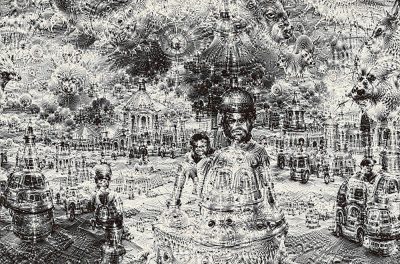On the occasion of bitforms gallery’s 20th anniversary, we are pleased to present A Generative Movement at bitforms gallery SF. Join us for the opening on October 2, from 2–7 PM. The exhibition, showcasing generative artwork from Refik Anadol, Daniel Canogar, LIA, Rafael Lozano-Hemmer, Manfred Mohr, Casey Reas, Siebren Versteeg, and Marina Zurkow, celebrates artistic vision through computational innovation with works spanning from 1971–2021. Although algorithmic in part, exhibited works are a human exploration of process—each piece is guided by unique parameters to construct a desired outcome. A Generative Movement manifests generative software’s ability to act as an artistic tool with evolving outputs.
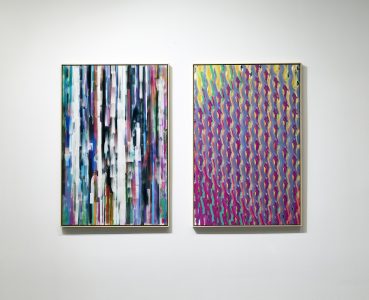
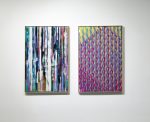
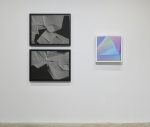

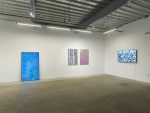
On the occasion of bitforms gallery’s 20th anniversary, we are pleased to present A Generative Movement at bitforms gallery SF. Join us for the opening on October 2, from 2–7 PM. The exhibition, showcasing generative artwork from Refik Anadol, Daniel Canogar, LIA, Rafael Lozano-Hemmer, Manfred Mohr, Casey Reas, Siebren Versteeg, and Marina Zurkow, celebrates artistic vision through computational innovation with works spanning from 1971–2021. Although algorithmic in part, exhibited works are a human exploration of process—each piece is guided by unique parameters to construct a desired outcome. A Generative Movement manifests generative software’s ability to act as an artistic tool with evolving outputs.
bitforms gallery has long celebrated software-based artworks. Previous exhibitions have contextualized generative work as a performative extension of conceptual art—a set of rules encoded in software that unfold in real-time. A range of forms including plotter paper drawings, morphing natural landscapes, and stacking geometric compositions demonstrate how this premise invites a series of chance outcomes that are impossible to predetermine. Generative art has recently found a new audience through the prominence and success of NFTs on the immensely popular Art Blocks platform. Art Blocks specializes in on-demand generative content stored immutably on the Ethereum blockchain. Within their marketplace, collectors are able to purchase a work that is randomly generated by an algorithm—every output is different. The resulting piece can vary from a static image to a 3D model or interactive experience. Over the course of this exhibition, many of the artists will be releasing projects on Art Blocks with select iterations on display at the gallery.
The gallery would like to thank StandardVision for their contribution of the Luma Canvas to present Rafael Lozano-Hemmer’s Saturation Sampler. We are pleased to exhibit this work in tandem with the artist’s solo exhibition, Unstable Presence, on view at SFMoMA through March 6, 2022.
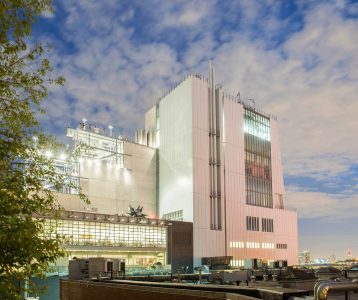
Hyundai Terrace Commission: Marina Zurkow Opening April 2025Marina Zurkow’s The River is a Circle consists of an animation based on custom software and an accompanying installation. The animation presents a view of the Hudson River in a horizontal split between the world above and under water, depicting a complex ecosystem of rivergoing vessels, wildlife, and the evolution of the meatpacking district. The installation extends the underwater environment to the terrace in a landscape combining maritime wreckage and oyster reef balls, devices used to provide habitat for oysters. The River is a Circle speculates on a circular economy, and a potentially positive cyclical flow back to modest strategies of maintaining ecosystems.

Marina Zurkow: Exploring Ecological Art Through Digital MediaIn a wide-ranging conversation with bitforms gallery, Zurkow discusses her artistic practice, her relationship with scientific research, and how she uses technology to explore environmental themes.
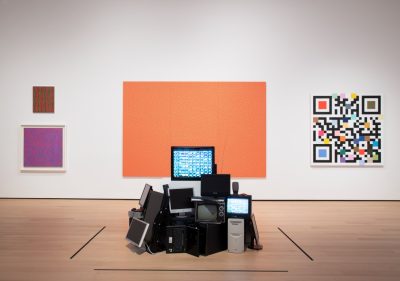
Electric Op at Buffalo AKG Art MuseumAn emerging movement called “Op” (short for “Optical”) took art and popular culture by storm. Op artists use abstract patterns to create optical illusions that are dynamic and interactive, much like the electronic images of the time.
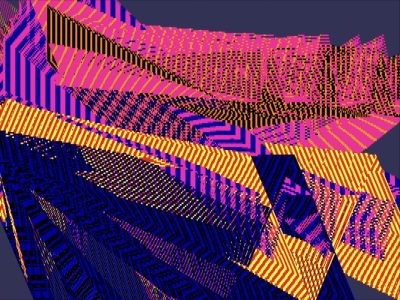
Manfred Mohr in Electronic Dreams Exhibition at Tate ModernElectric Dreams celebrates the early innovators of optical, kinetic, programmed and digital art, who pioneered a new era of immersive sensory installations and automatically-generated works.
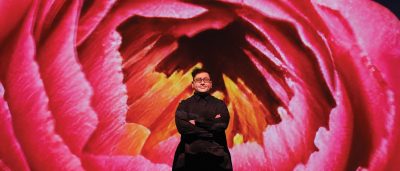
Modern Patrons: Refik AnadolThe leading new media artist leverages the power of Web3 technologies to support and uplift the Amazon’s Yawanawá tribe
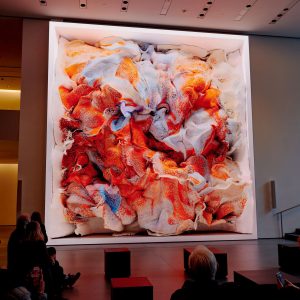
An Inside Look at How Refik Anadol and Digital Art Were Finally Welcomed into MoMA and the Traditional Art WorldRefik Anadol had emerged from the same digital art communities that nurtured the careers of artists like Mike Winkelmann; however, the Turkish-American artist had three fine art degrees and a thriving studio practice with a dozen employees by the time he started selling NFTs.
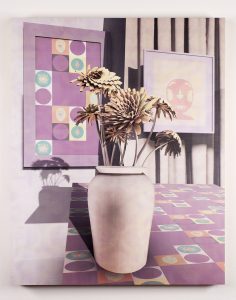
BITFORMS GALLERY EXHIBITED A GROUP SHOW THAT EXEMPLIFIES NEW MEDIA ART A pioneer and champion of new media, digital and internet-based art, New York-based gallery bitforms presented the works of Ellie Pritts, Claudia Hart, Rafael Lozano-Hemmer, Manfred Mohr, Jonathan Monaghan and Refik Anadol.
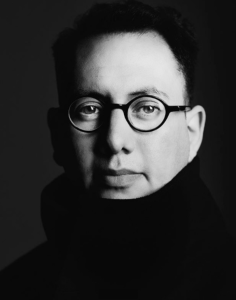
Live from GTC: A Conversation with Refik AnadolRefik Anadol in a recorded conversation with Richard Kerris, VP of Developer Relations, NVIDIA. Anadol and Kerris discuss the artist’s Large Nature Model.
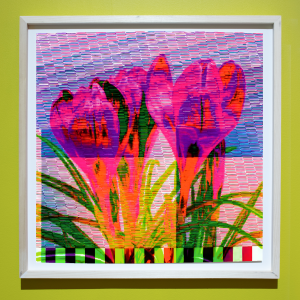
http://Web3 Travel Guides: Future Horizons, Art Dubai Digital And BeyondOne of the longest-running and most well respected new media art galleries, bitforms represents established, mid-career, and emerging artists critically engaged with new technologies, offering an incisive perspective on the fields of digital, internet, and time-based art forms.
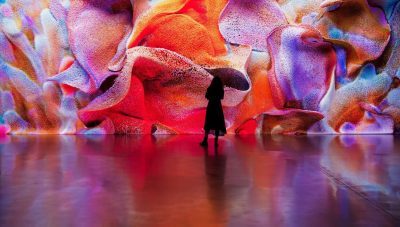
Refik Anadol’s use of AI has made him the artist of the momentMr Anadol, a 38-year-old Turk who lives in Los Angeles, is riding widespread public interest in artificial intelligence to become the most visible digital artist of his generation. His work speaks to the innovation and anxieties of the current moment.

‘This AI model will be the voice of nature,’ Refik Anadol“It’s a whole new perspective as nature is a much different ecosystem. It’s not about finding information or using human constructed reality — which we love. But nature needs new ways of perceiving, recording, and preserving through AI and data. I’m dreaming that it is a technology that we can trust, rely on, and almost use like a teacher of nature.”

REFIK ANADOL TO PRESENT HIS LARGEST INSTITUTIONAL SOLO EXHIBITION IN THE UK Serpentine is to present Echoes of the Earth: Living Archive, an exhibition of new and recent works by internationally renowned artist, technologist, and pioneer in artificial intelligence arts, Refik Anadol.
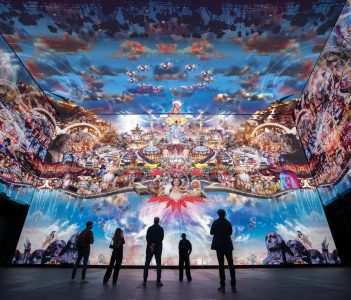
Going big: digital artists who show on a grand scale at immersive institutionsMarco Brambilla, the London-based film-maker and digital artist, made a version of his Hollywood epic Heaven’s Gate for Outernet, London, in January 2023, and King Size, a work about the rise of Las Vegas and the death of Elvis, at Sphere.
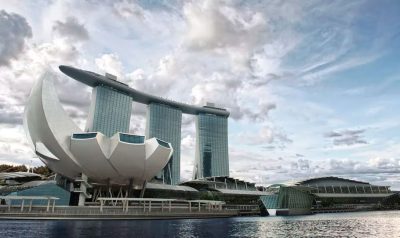
Art SG highlights Singapore’s Art Market Momentum“This fair is more experimental with showing new media art than bigger more established fairs,” said the gallery’s founder and director Steven Sacks.
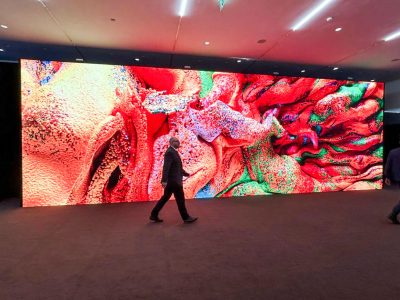
At Davos, an art installation looks to bring people closer to nature with a little help from AI“Living Archive: Nature” is the creation of Refik Anadol, a Turkish-born, Los Angeles-based media artist, who said the piece is meant to move AI beyond its human-based training to bring people closer to nature and bring urgency to the need to protect it.
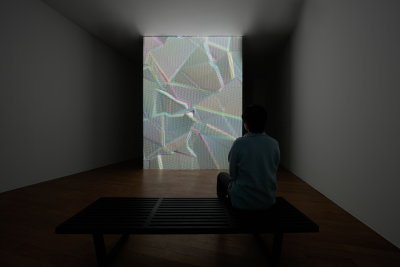
A Personal List of Some of The Most Interesting Digital-Art Experiments of 2023At bitforms gallery, Casey Reas’s latest exhibition, It Doesn’t Exist (In Any Other Form), delves into conceptual software painting, utilizing simulation and computer graphics.
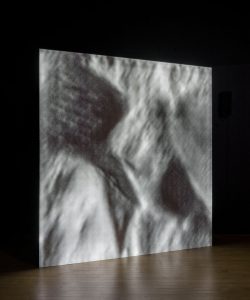
The Art of IntelligenceCompressed Cinema is a series of five audiovisual works, a collaboration between Casey Reas and Jan St. Werner. Reas created the imagery in the tradition of experimental films that use existing films as raw materials. […] Each piece marries Reas’s visuals with Werner’s musical compositions.
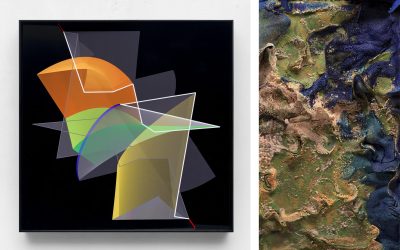
Manfred Mohr, Refik Anadol, Quayola, Casey Reas at Art SGApplying what he has described as ‘programmed expressionism,’ Mohr is known for creating striking drawings using plotters, mechanical devices that hold a pen that sketches lines (generated by algorithms) on paper. His recent sculptural experiments, computer-generated algorithmic aluminum wall structures, will be a highlight of bitforms’ booth.
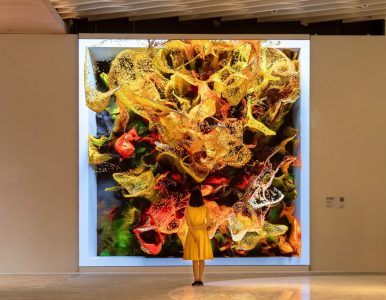
Nanjing’s Deji Art Museum Boasts Works by Monet and Beeple. Is It a New Beacon for Asia’s Art Scene?Upon visiting the museum, one might think The Deji Art Museum’s main focus is on digital art, as currently, two pieces by the highly acclaimed new media artist Refik Anadol, Melting Memories – Engram – Box and Quantum Memories Probability, are prominently displayed at the museum’s entrance.
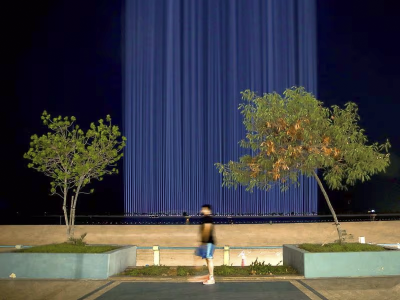
Why Lulu Island is a ‘paradise for contemporary art’In an interactive exhibition entitled Translation Island, Rafael Lozano-Hemmer has transformed Lulu Island in Abu Dhabi into an interactive playground of light.
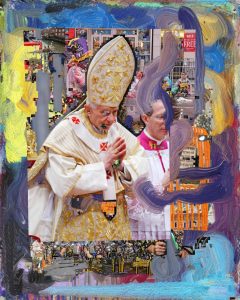
Siebren Versteeg in Outland: “The Best Digital Art of 2023”Siebren Versteeg’s For a Limited Time, released on Arsnl Art, incorporates the mechanics of blockchain editioning into the artwork itself—and the outputs are both aesthetically compelling and conceptually potent… – Sarah Zucker
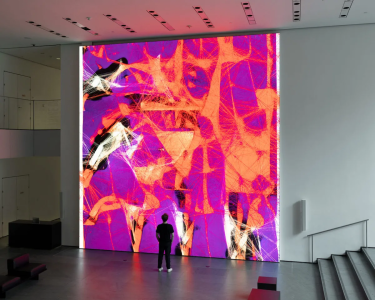
Refik Anadol: Defining Artworks of 2023 on ArtNewsRefik Anadol’s Unsupervised – Machine Hallucinations – MoMA (2022), a generative artwork by arguably the premier digital artist of the moment, uses the museum’s visual archive to produce a machine-learning model that interprets and reimagines images of artworks in MoMA’s collection.
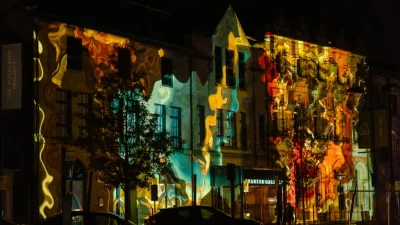
Lumiere 2023: Stunning images as festival returns to DurhamLumiere features 40 installations, with Bishop Auckland lit up for the first time. Spanish artist Daniel Canogar created a projection for The Spanish Gallery in Bishop Auckland.
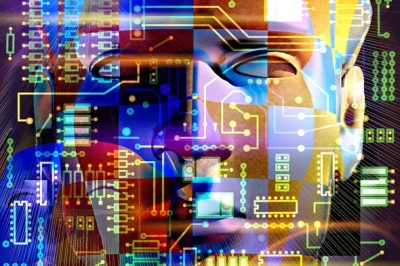
Does the First Amendment Confer a ‘Right to Compute’? The Future of AI May Depend on ItSince late 2022, visitors to New York’s Museum of Modern Art have been mesmerized by Refik Anadol’s 24-foot by 24-foot artificial intelligence–generated artwork “Unsupervised.”

Refik Anadol is betting his AI art can help build a better world“Artificial intelligence is a mirror for humanity,” says the Los Angeles-based artist Refik Anadol. “It’s all about who we are as humans.”
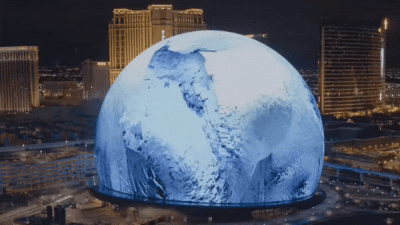
In Las Vegas, Refik Anadol’s Biggest Undertaking YetThe Turkish-American artist is inaugurating Las Vegas’s new Sphere with his swirling, real-time generated digital collages of space and nature.
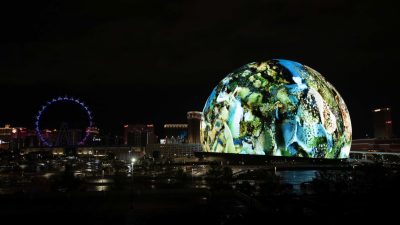
Refik Anadol lights up MSG’s Las Vegas sphere with collages of outer space and natureLast week Exosphere featured its first artist commission Machine Hallucinations: Sphere by Refik Anadol. “This opportunity aligns perfectly with our studio’s long-term mission of embedding media arts into architecture to create living architectural pieces that are in constant interaction with their environments.”
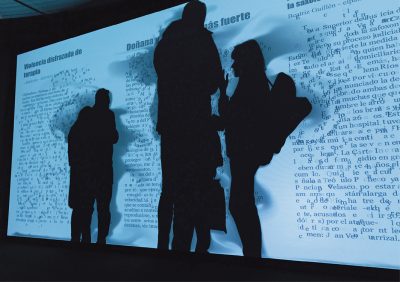
Rafael Lozano-Hemmer: Gray AreaRafael Lozano-Hemmer is one of those rare artists who both understands complex technologies and can harness them to make works of art that are, miraculously, not only smart but spectacularly visually compelling.
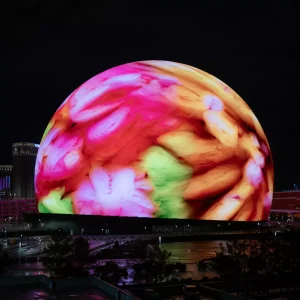
The latest canvas for Refik Anadol’s AI-generated art? The new Sphere in Las VegasAnadol will take over the exterior of the soon-to-debut Sphere in Las Vegas, a glowing, 366-foot-tall, globe-shaped events venue that will open Sept. 29 with a series of U2 concerts. The exterior of the futuristic-looking building, or the “Exosphere,” as it’s being referred to, is a 580,000-square-foot programmable LED screen that will be used as a 360-degree canvas by rotating artists.
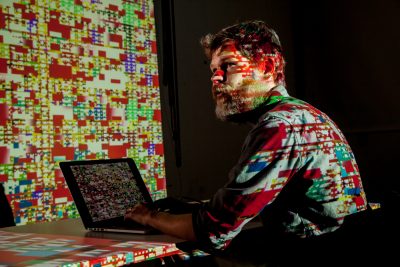
Casey Reas and Art After the Crypto CrashFeral File, launched in 2020, is one of the more inventive projects to come out of the recent convergence of digital art with Blockchain and NFT platforms.
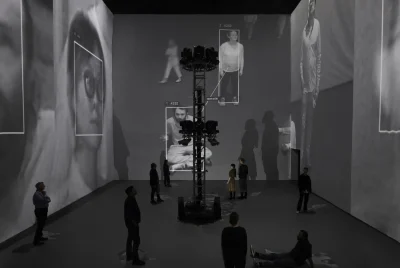
‘There’s no such thing as a neutral algorithm’: the existential AI exhibition confronting SydneyWhen Y2K seemed like the world’s most pressing technological concern, the Mexican-Canadian artist Rafael Lozano-Hemmer was using a dictionary and a set of grammatical rules to teach a computer how to write questions.
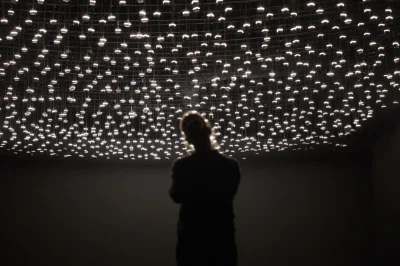
New show may make you feel like you’re being watched. That’s because you areTracking technology, facial recognition and more are all at play in Atmospheric Memory, the Mexican Canadian artist Rafael Lozano-Hemmer’s latest exhibition, which is designed to make air into something tangible.
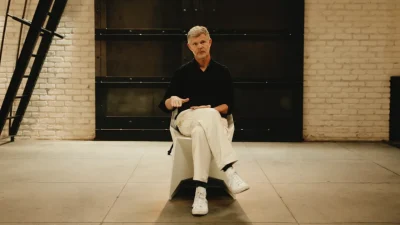
The Godfather of Generative Art Goes GlobalCasey Reas, an artist and software designer who has pioneered the use of automated computer code in creating digital art for over 20 years, recalls how much lonelier—and cumbersome—things used to be prior to the rise of NFTs, which made it much easier to sell original digital artwork.
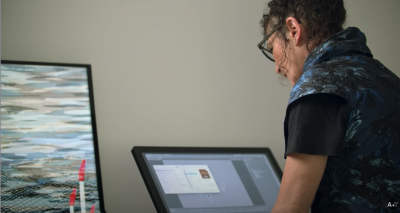
Marina Zurkow profiled in ART+TECHNOLOGYWe meet artists Olafur Eliasson and Marina Zurkow who are working to help heal the disconnect, developing democratic and expressive tools for storytelling and dialogue that encourage everyday activism.
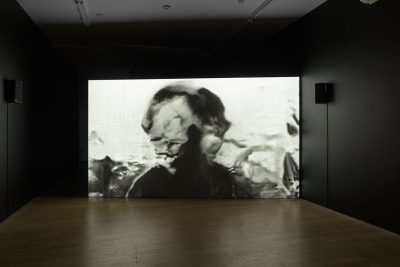
Alchemical by Jan St Werner and Casey Reas now on view at bitforms gallerybitforms gallery is pleased to introduce Alchemical, a collaborative exhibition by Casey Reas and Jan St. Werner. Alchemical presents the artists’ suite of videos alongside a selection of prints by Casey Reas. The online component of this exhibition is presented in collaboration with New Art City.
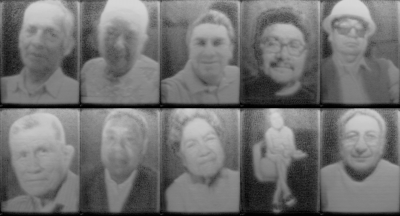
Visit “A Crack in the Hourglass,” Rafael Lozano-Hemmer’s memorial to the countless victims of COVID-19, online through Museo Universitario Arte Contemporáneo During the COVID-19 pandemic, whenever someone dies, the pain of the loss itself is aggravated by the inability to collectively express our mourning in funerary rites and rituals of farewell.
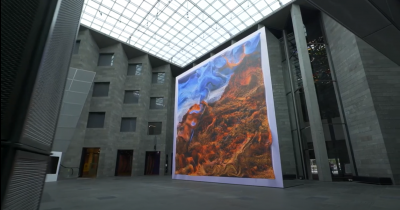
Watch an interview with Refik Anadol on his “Quantum Memories,” featured in the NGV Melbourne TriennialRefik Anadol’s Quantum memories, 2020, draws upon a dataset of more than two hundred million nature-related images from the internet, which are processed using quantum computing software developed by the Google AI Quantum research team in combination with a supercomputer that has been programmed with machine-learning algorithms.
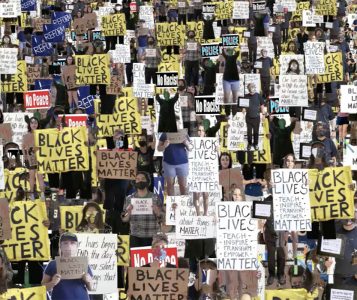
Public_Public_Address: A Nationwide Virtual ProtestPublic_Public_Address is an ongoing, 24/7, national virtual protest in support of and in solidarity with Black Lives Matter. The ongoing protest stream features video submissions of both supporters who are unable to place themselves at physical risk and those who can protest in person.
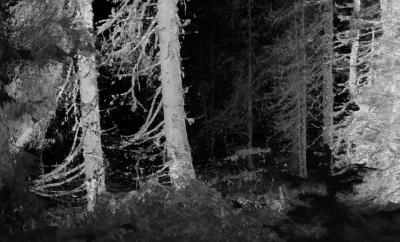
Quayola selected for Texas commission, “Pioneer Tower Public Art Project”Renowned new media artist Quayola will create a projection mapping video interpreting Fort Worth’s nature using high-precision 3D laser scanning and digital tracking systems projected on all four sides of Pioneer Tower.
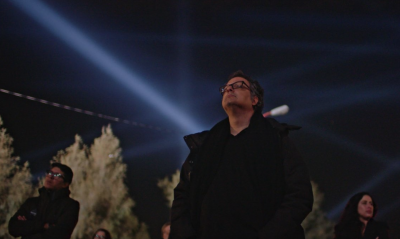
Rafael Lozano-Hemmer featured in Art21’s “Borderlands” episdoeLozano-Hemmer highlights the intimate, personal relations in a public space that is otherwise systematically dehumanizing. The artist explains, “The most important role that art can play is that of making complexity visible. The usage of technology is inevitable; it’s up to the artist to use those technologies to create experiences that are intimate, connected, and critical.”
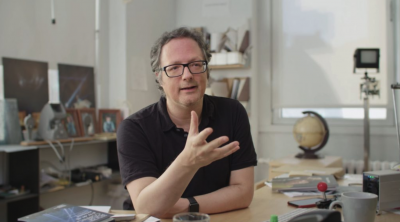
Rafael Lozano-Hemmer’s Art 21 segment highlighted in artnet, “We as Artists Need to Intervene”Known for his large-scale, interactive installations, Rafael Lozano-Hemmer uses contemporary technologies like computerized surveillance, heart-rate sensors, and robotics to create participatory experiences and platforms for public participation and connection.
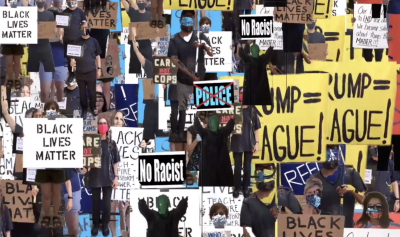
“Public Public Address” featured on CNN: This website helps people with illnesses and disabilities participate in Black Lives Matter protestsHigh-profile killings of several Black people by police sparked nationwide protests this summer, with marchers demanding police reform and racial justice. Jason Lazarus, Siebren Versteeg and Stephanie Syjuco founded Public Public Address on September 1 to help people with illnesses and disabilities participate in these Black Lives Matter protests without putting their lives at risk.
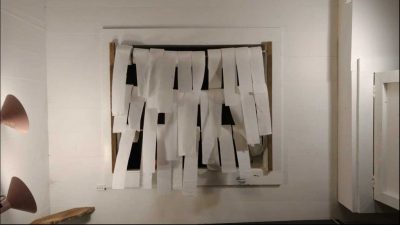
‘Email Exhibit! Yours Sincerely, Siebren Versteeg and bitforms’ by Charlotte Kent for CLOTSiebren Versteeg’s In%20Memory is an email; a checklist of speculative objects, a series of links, and a PDF; together creating a daisy-chain as exhibition… bitforms’s webpage for the exhibit provides a space to leave your email address, after which you will receive the email that is the show. It is a charmingly irreverent approach to exhibition possibilities while also quite seriously invigorating our musings on how we might exhibit work digitally.
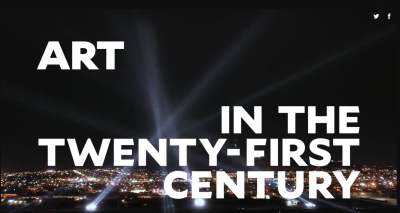
Rafael Lozano-Hemmer featured in the new season of Art21Lozano-Hemmer creates participatory artworks that utilize technology like robotics, heart-rate sensors, and computerized surveillance tools in order to facilitate human connection. Technologically sophisticated yet deceptively simple in their execution, Lozano-Hemmer’s spectacular, immersive works are often installed in public places as a means of transforming these sites into forums for civic engagement.
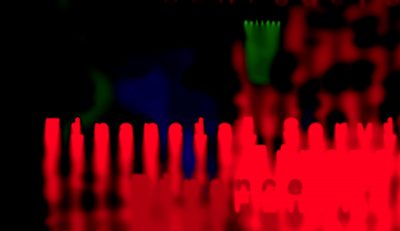
Daniel Canogar, Loom: Streaming September 10–October 25, 2020bitforms gallery is proud to present a first of its kind, cloud-based, 24/7 stream of generative software-based art, presented in collaboration with Small Data Industries.

Daniel Canogar’s Data Abstractions, Art in AmericaAfter three months with the internet as my primary portal to the outside world, I was intrigued by the premise of Daniel Canogar’s latest work: “to expose the hidden threads of data networks.” Inside bitforms gallery, six large, wavelike metal structures covered with modular flexible LED screens hang on the walls or sit on the floor, all part of the artist’s “Billow” series (2020).
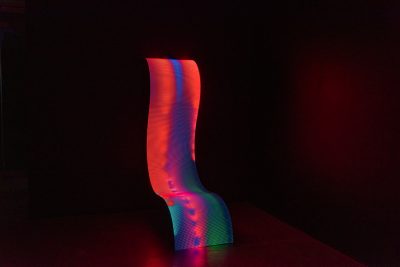
Daniel Canogar, “Billow”, Artforum Critic’s PickDaniel Canogar’s sinuous, ripple-like sculptures emanate colorful LED light in “Billow,” his solo exhibition here. It’s no accident that his bending architectural forms mimic hills, valleys, and mountains: Their slumbering shapes make the works’ cascading waves all the more hypnotic.
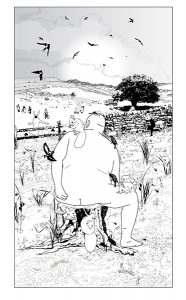
Mesocosm (Northumberland, UK) by Marina Zurkow: Streaming July 8 – 21, 2020bitforms gallery is proud to present Mesocosm (Northumberland UK) by Marina Zurkow as the third piece in a series of streaming generative artworks, presented in collaboration with Small Data Industries.
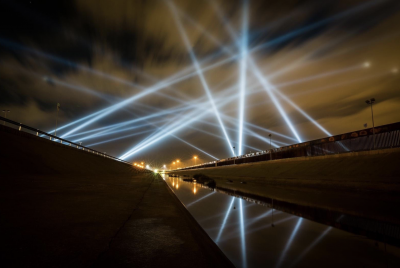
Rafael Lozano-Hemmer on Seductive Participation and the Oppression of Metrics, Art in AmericaCan an artist engage with surveillance technologies without being complicit in their use for control and oppression? Audiences tend to treat interactive works as a fun spectacle, a chance to take a selfie. So how do artists clarify their position? How do they present their work as commentary, rather than mere reproduction?
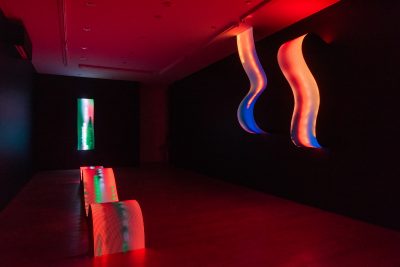
Daniel Canogar, “Billow,” virtual walkthrough with Steven Sacks

Virtual Opening of Billow by Daniel Canogarbitforms gallery is pleased to present our fourth solo exhibition with Daniel Canogar. The data-sphere is a driving force of society and the economy, despite its invisible nature. This lack of visibility can make it difficult to comprehend how information affects daily life. Billow attempts to expose the hidden threads of data networks.
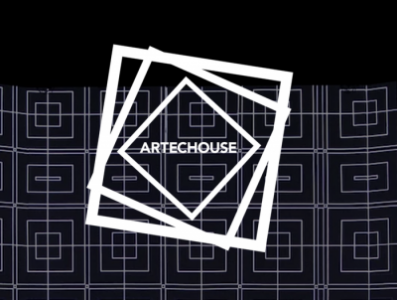
ARTECHOUSE Q&A: Refik Anadol“Arts has this quality of imagination. Artists are always inspired by the technology around them, they always try to use them in the maximum capacity of their imagination,” notes artist, Refik Anadol, the visionary behind Infinite Space and Machine Hallucinations.
Wet Logic reviewed by Louis Bury for Hyperallergic From behind bitforms gallery’s glass facade, an artistic toilet bowl (“Toilet Joke I,” 2020) beckons passers-by into Wet Logic, Sarah Rothberg’s and Marina Zurkow’s digitized meditation on water’s unearthliness.

Today’s Ideology: For sale to benefit Democratic CandidatesThe series Today’s Ideology by Casey Reas uses editorial photos from The New York Times to create generative collages. Each work in the series is made on the day referenced in the title and consists of all images from that day’s paper. On December 19, 2019 the House of Representatives voted to impeach the President. In response to this historically important day, Casey Reas and bitforms gallery will donate all proceeds from sales of Today’s Ideology (19 December 2019) to support Democratic candidates in the 2020 election.
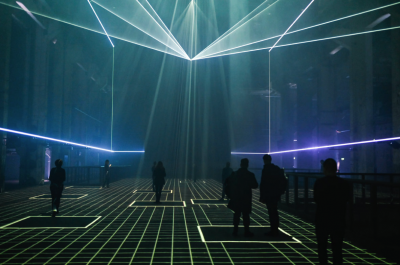
Can Computers Dream? Refik Anadol Explores The Future of Artificial IntelligenceFrom data sharing to hyperreality, Refik Anadol’s new installation at Light Art Space explores how our world will transform as humans and computers come closer together. Words by Alice Bucknell.
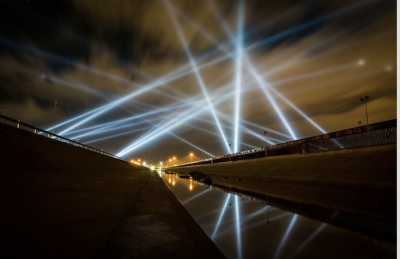
Artsy names Rafael Lozano-Hemmer’s Border Tuner among best public art of 2019“Border Tuner, a timely and ephemeral light and sound installation by Rafael Lozano-Hemmer, created a unique and powerful platform for interconnectivity and public participation at the U.S.–Mexico border. By melding performance, robotic technology, and social discourse, Lozano-Hemmer’s large-scale installation shared a lesser-told story by visibly highlighting positive counter-narratives about El Paso and Ciudad Juárez’s interdependent culture. A challenging public project to achieve, Lozano-Hemmer’s piece was able to brilliantly and poetically render intimate bridges between strangers standing in two different cities and countries that share so much.”—Nicholas Baume, Director and Chief Curator, Public Art Fund
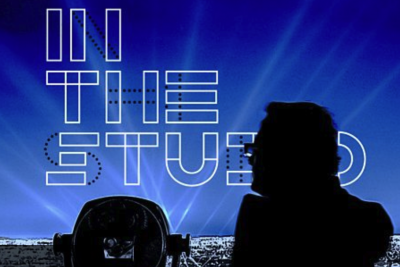
Rafael Lozano-Hemmer interviewed on BBC regarding his new work, Border TunerImagine huge searchlights which can be seen over a ten mile, 15 kilometer radius talking to one another across two countries. This is exactly what electronic media artist Rafael Lozano-Hemmer is creating this November between Ciudad Juárez in Mexico and El Paso in Texas. Called “Border Tuner,” the project will see enormous bridges of light connecting the US-Mexico border for the first time.
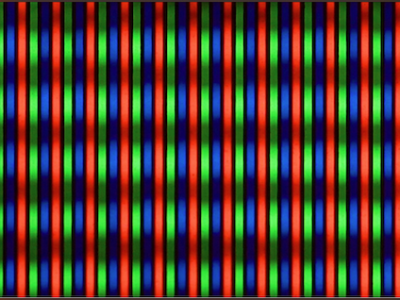
Collecting in the Age of Digital Reproduction Casey Reas“In the art market, almost everything sold is an object such as a drawing, a painting, a sculpture, an installation, or a photograph, but there are some exceptions. These deviations may include a contract, a set of instructions, a digital video file, or a software file. These are all examples of art as information rather than material.“
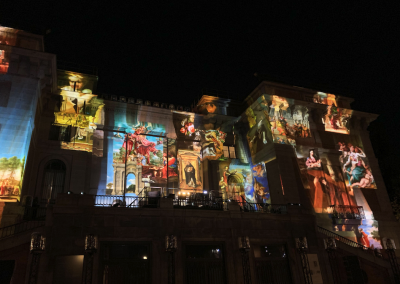
Daniel Canogar presents Amalgama el Prado on the facade of the Museo del Prado
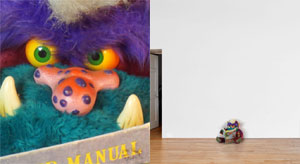
Siebren Versteeg, In%20Memory, now liveIn In%20Memory, playful references to painting, ready-mades, and installation inquire toward the experience of isolation within our technological present. In effort to participate yet emancipate from the expectation of an artist to create “things,” In%20Memory advances viewing room culture with deep zoom technology while challenging visitors to engage in a meaningful temporal experience. The exhibition is accompanied by an essay by Katie Geha.
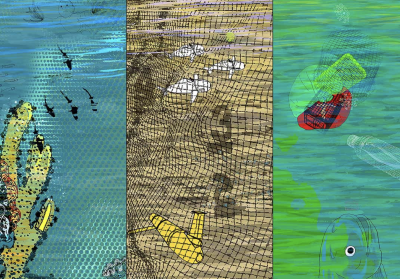
Wet Logic, an exhibition by Sarah Rothberg and Marina Zurkow, opens at bitforms galleryWet Logic presents a model of the world organized according to a wet, oceanic ideology rather than a dry, land-based paradigm. This is a world that manifests the circuitous nature of time and the enmeshment of humans to the planet. Rothberg and Zurkow present a series of systems that further human connection to oceans by way of action and imagination.
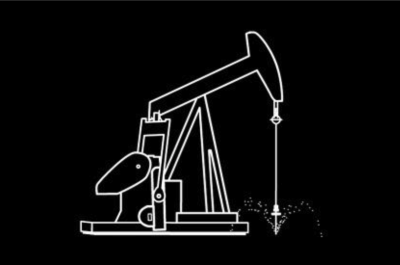
Marina Zurkow’s exhibition The Thirsty Bird opening at the Contemporary Art Museum St. LouisMarina Zurkow focuses her work on the intersection of nature and culture, offering wry and pointed critiques of this perilously dysfunctional relationship. The Thirsty Bird offers parallel narratives on two essential, yet incompatible elements: oil and water.
